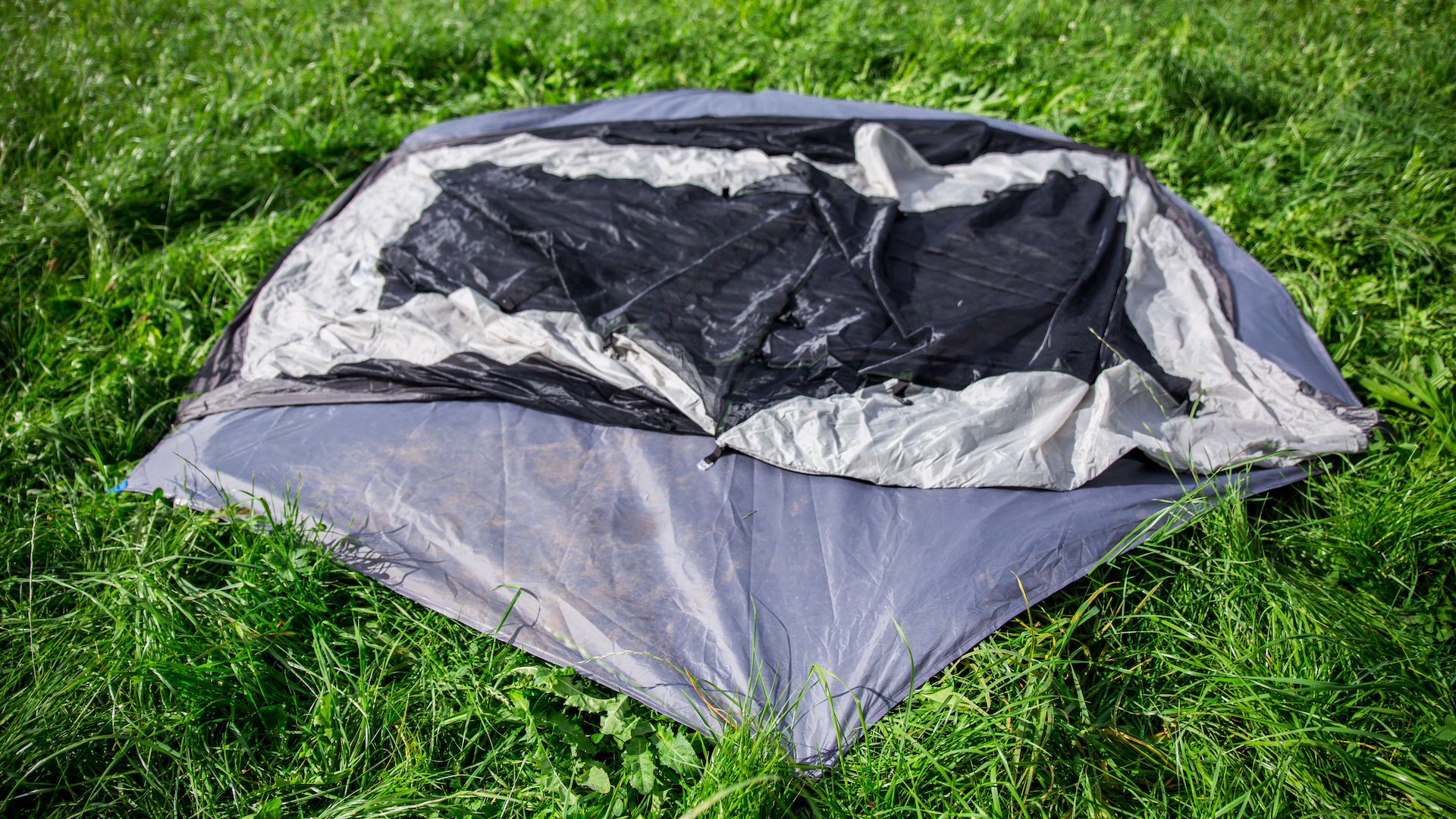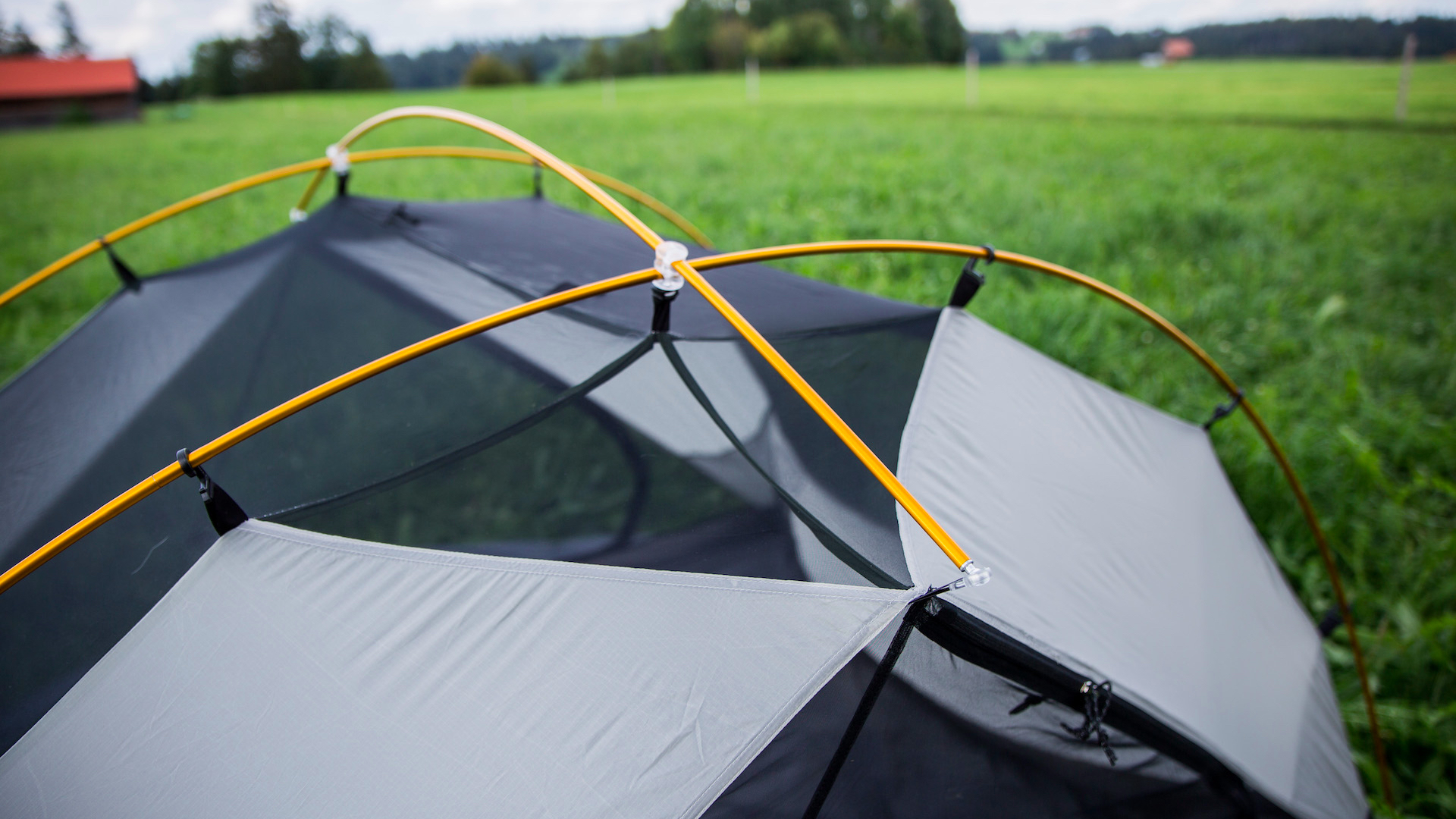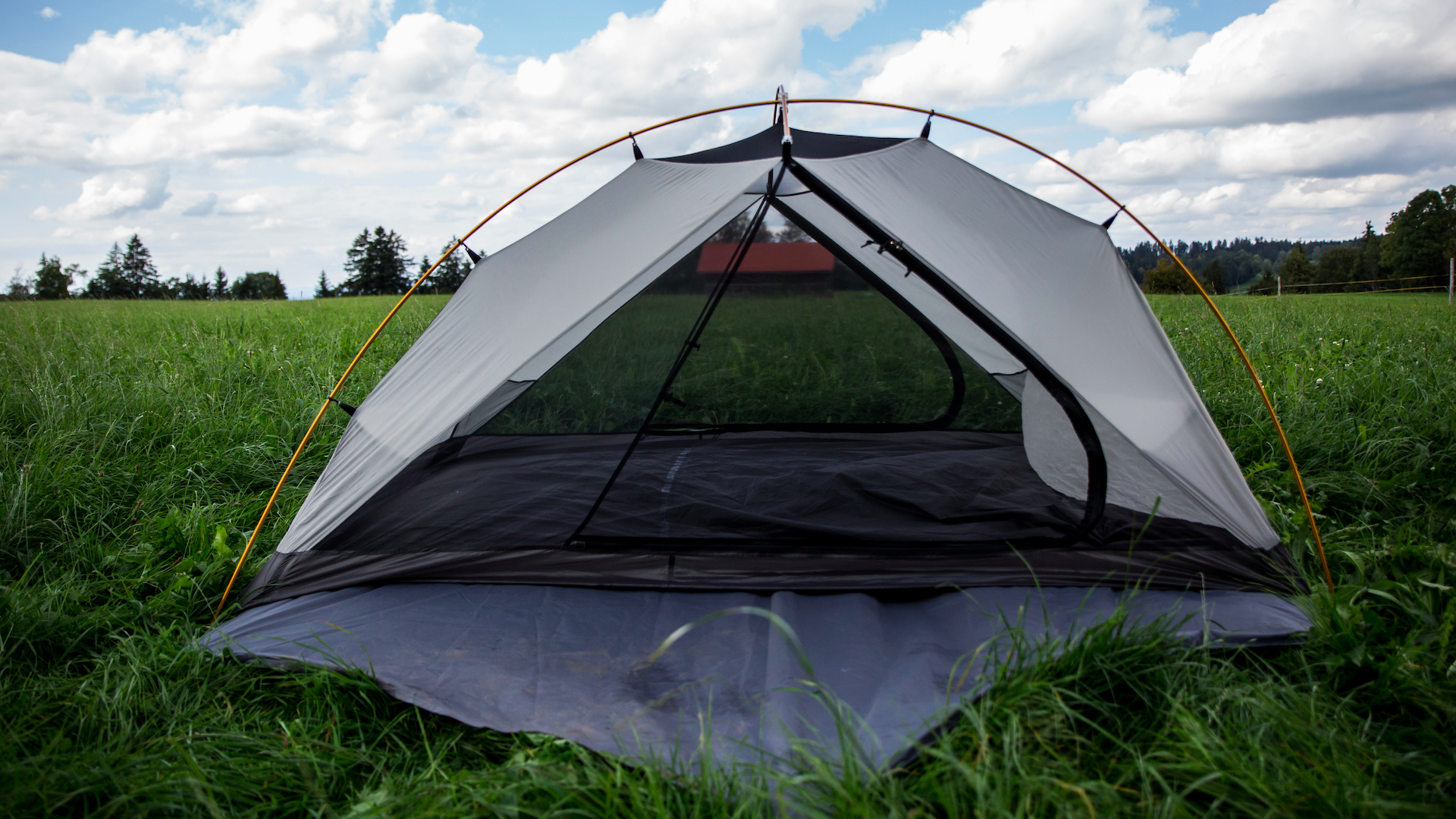Advnture Verdict
An ultralight, two- or three-person, three-season tent with twin porches, which strikes a good balance between carry weight, functionality, durability, storage and living space.
Pros
- +
Light
- +
Roomy to fit two people and bags
- +
You can sit up
Cons
- -
Complicated to put poles up first time
- -
Pegs need to be hammered in
- -
Corner grips also different to standard tents
- -
Can feel cold
You can trust Advnture
Alpkit Jaran 3: first impressions
Combining the functionality of twin porches, semi-geodesic geometry and a strong wind-resistant design, the Alpkit Jaran 3 is an ever-popular choice for pairs or trios of hikers who want one of the best backpacking tents to take into the mountains and beyond.
• List price: $369.99 (US) / £279.99 (UK) / €329.99 (EU)
• Total weight: 2,360g / 83.24oz
• Poles weight: 610g / 21.51oz
• Pegs weight: 100g / 3.52oz
• Flysheet weight: 820g / 28.92oz
• Inner weight: 800g / 28.21oz
• Optional footprint weight: 250g / 8.81oz
• Color: Khaki
• Pitched dimensions total: 220cm x 174cm
• Pitched dimensions inner: 146cm x 106cm
• Packed dimensions: 15cm x 45cm
• Flysheet waterproof rating: 2,000mm hydrostatic head
• Groundsheet waterproof rating: 3,000mm hydrostatic head
• Compatibility: Hiking, backpacking, general camping
The horizontal supporting crossbar might prove a bit fiddly to begin with, but after slotting all the poles together it’s a no-nonsense design. Black clips enable you to hang the inner liner before easily clipping the outer, ensuring easy assembly when you need it. A great, spacious tent that sleeps two (in luxury) or three people, the Jaran has ample ventilation slots and mesh panels to keep the bugs out. This makes it an ideal three-season tent, which will keep you warm, dry and largely bug-free for the majority of the year.
The thicker flysheet provides durability, whilst the bathtub style groundsheet gives some protection from the ground, although a tent footprint (not included) is recommended in damp, boggy mountainous ground.
The Alpkit Jaran 3 offers lots of liveable functionality, thanks to twin porches (measuring 136cm x 74 cm), which ensure that the living space within the tent is readily available, with ample room for storing kit either side of sleeping spaces. This makes the Jaran 3 easy to share with a companion or two, or ideal for small families (parents and child), with room for sleeping kit inside and bigger bags protected from the elements out in the porch.
Alpkit Jaran 3: in the field

I took the Alpkit Jaran 3 on a trip to a location just outside of Cortina in the Dolomites, northern Italy, to test its capabilities as a camping tent. For a solo traveller, it’s too big – but if you’ve packed a lot of kit, like me, the tent provides ample living room for trips that last for a week or more. Storage pouches made from netting provide a means of organization inside the tent, but if there are two or three of you, then you may prefer more.
Arguably the Jaran 3 is slightly on the large and heavy side for backpacking, trekking or wild camping, but I found it that could be easily split into two (or three) sections, so it could be divided up between hikers’ backpacks, with one person carrying the outer and inner and the other carrying the poles.
With both doors having their own dedicated porch space, there is plenty of room for storing multiple packs and pairs of boots out of the rain, although these areas have no groundsheet, so things can get muddy. Side doors can be easily opened from the inside, meaning night-time loo breaks are easy without needing to disturb the other tent partner.
All the latest inspiration, tips and guides to help you plan your next Advnture!

Design
The Alpkit Jaran 3 is a free-standing structure with a geodesic shape, formed when you slot the inter-connected frame together and place the ball joints at the end of the poles into a female cup in each corner of the tent. You hang the inner first, and then add the fly sheet, which clips into the corners. For tent gurus, pitching the Jaran 3 will be a doddle – but those who haven’t come across the design before may find it a bit fiddly, and need to consult the paper instructions that are included.
Another bonus was the discovery of ventilation holes that can be held open with Velcro openings to allow air to circulate through; these can be useful after several days of tent life to allow the stuffiness to waft out.
But for me, the most useful design feature and selling points are the twin doors – regardless of whether you plan on sharing the Jaran 3 or keeping it all to yourself, these doors make tent living so much easier.

Comfort
From a comfort perspective, the Jaran 3 has been my go-to tent recently whenever I’ve needed to spend some time living time under canvas. Stash pockets, porch spaces and the ability to sit up are all luxuries in camping, and the Jaran 3 makes longer stays very comfortable. There is so much space in this wide tent, and staying organized is so easy, that I don’t end up with kit spooling all over the place.

Construction
The Jaran 3 has a flysheet with 2,000mm hydrostatic head rating. On paper it could be more waterproof, but that would be detrimental to the overall weight of the fabric, and it has reliable factory-taped seams, sealed using solvent-free polyurethane tape that’s both PVC and VOC free.
On test the Jaran 3 and I survived everything from torrential North Wales rain to cold mountain mornings. I can confirm my kit stayed dry and resistant to damp, too, thanks to the Jaran 3’s overall construction and use of 40D ripstop nylon with a PU backer in both the flysheet and groundsheet.
You have option to upgrade the poles to a lightweight DAC alloy pole. Meanwhile, the mesh-and-polyester panelling inner is made with 15D ripstop nylon that feels oh-so-soft and gives the Jaran 3 a luxurious feel that wouldn’t be out of place on a tent commanding a price tag twice as big as the list price for this Alpkit number.

Value
For less than £300, a premium two-door tent weighing under 2.5kg is a brilliant buy. It’s a functional, practical, discreet tent that will no doubt serve you well in the long run, providing you don't lean heavily on the poles or pack it away while the materials are damp.
This is my favorite product to use with friends. The only downside is that if you’re camping solo and you’re inclined to feel the cold, a slightly smaller tent might be more economical in terms of staying warm.
A former brand ambassador for Merrell and current Ordnance Survey #GetOutside Champion, Jessie Leong’s lifelong outdoor odyssey began with Duke of Edinburgh’s Award walks in the Peak District. This segued into long hill hikes in the Yorkshire Dales, multi-day treks in the Lake District, scrambles in North Wales and adventures scaling alpine pinnacles. When not walking, she can be found rock climbing, wild swimming, cycling, photographing, filmmaking, writing and modelling. Jessie’s most recent claim to fame is playing a Miss World contestant in the 2020 feature film Misbehaviour.


